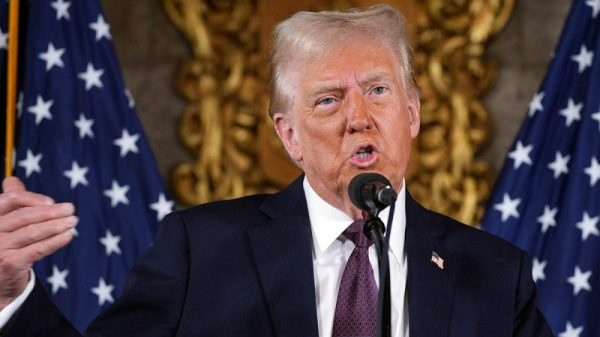Lithium-ion battery technology has become a critical component in the coming carbon-neutral economy.
Its success will require massive investments in a value chain spanning across complex battery metals mining projects, massive lithium-ion battery manufacturing plants and renewable energy storage systems.
Read on to learn what some of Benchmark’s top consultants had to say about what’s driving demand, shaping supply and encouraging investment in the lithium-ion battery industry.
EV and energy storage sectors driving battery demand
EVs are by now synonymous with lithium-ion batteries in the minds of most, and without a doubt the burgeoning EV market currently represents the largest demand segment for the battery industry.
Terry Scarrott, principal consultant at Benchmark, told investors in a presentation that while plug-in hybrids represent a large portion of demand in the EV market today, over the next decade his firm expects to see that demand transition into fully electric vehicles, with a focus on passenger cars and light-duty vehicles.
However, battery demand from energy storage systems is also expected to see robust growth in the coming years. “It may look like it’s being dwarfed by the EV market, but there’s certainly a very healthy compound annual growth in that market as well,” he told the audience. “Most of that’s going to come from utility grid-scale projects. But there’s also a very important role for that to play with decentralized energy storage, and that’s going to encompass all the markets globally.’
Benchmark also sees the consumer electronics sector representing a greater share of battery demand going forward — specifically the emerging micro-mobility market, which includes electric bikes, kick scooters and mopeds.
According to data from Benchmark, batteries are expected to account for a whopping 88 percent of the 1.2 million metric tons of lithium demand that is projected in 2024.
EV makers looking to improve cost and range
Over the past year, EV sales growth has shown signs of decline as the industry tries to overcome roadblocks to widening consumer adoption — mainly cost and range anxiety. In Perth, the Benchmark team shared a number of developments playing out in the space that might help to alleviate these challenges in consumer demand.
“The first one is that we’re seeing improvements in energy density, which is helping consumers to overcome some of the range anxiety that we often hear about,” explained Scarrott in his presentation. “Within that there are many technologies that are either currently being deployed or are emerging, or are even in early stages of development. And that gives us cause for optimism when we are looking at the future markets.”
One of those technologies is solid-state batteries, noted Benchmark Principal Consultant Cameron Perks, who also spoke at the event. As the name suggests, these batteries use a solid electrolyte between the anode and cathode rather than the liquid electrolyte and polymer separator used in traditional lithium-ion batteries.
Major automaker Toyota Motor (NYSE:TM,TSE:7203) plans to bring EVs powered by solid-state batteries to market by 2028. This battery type requires as much as five to 10 times more lithium than its liquid counterparts.
The increased energy density of these batteries addresses buyers’ concerns about both battery range and cost by allowing for faster charging, longer battery life and removing the need for a graphite anode structure.
“It’s about performance of the EVs, that sex appeal is the range,” said Perks. “And that’s where solid-state batteries will come in eventually, and it just adds that much more demand upside to lithium.”
In addition to solid-state battery technology, Benchmark is paying attention to the emergence of various alternatives to traditional chemistries, such as nickel-cobalt-manganese (NCM). In particular, lithium-iron-phosphate (LFP) batteries and derivatives such as lithium-manganese-iron-phosphate (LMFP) are on the minds of the firm’s consultants.
“We’re getting into the realm of around 160 to 200 watt-hours per kilo for LFP, which gives a very compelling argument for the widespread deployment of LFP. And certainly a more cost competitive alternative to NCM,” said Scarrott.
These sentiments were echoed by Maximilian Court, Benchmark’s product director of battery chemicals. “Some of the different (battery) types, LMFP for example, can start to encroach on NCM-type energy densities to solve some of that range anxiety problem that particular automakers have,” he noted in his presentation.
Lower-cost LFP batteries may also lessen inflation-related pressures on consumers. “That’s clearly quite attractive, particularly when households are under pressure to buy a new car, but not spend or break the bank. They’ll look probably to LFP-type chemistries, particularly if you were to add in some manganese, for example, which can increase the volumetric and gravimetric densities of the battery and improve the range,” Court added.
While the high cost of EVs compared to internal combustion engine (ICE) vehicles is a challenge for now, Scarrott said Benchmark sees battery prices falling in the coming years. For the widespread uptake of EVs to come to fruition, “we really need to see price parity between EVs and ICE traditionalist vehicles,” he said. “And in our outlook, we expect that inflection to happen at some point towards the end of the decade, particularly for passenger car vehicles.”
EV supply chain facing raw materials ‘cliff’
Other key challenges facing the EV market lie within the global battery supply chain.
Is there enough battery manufacturing capacity to meet future demand? Are there enough battery metals projects in the pipeline to supply feedstock to battery plants? Benchmark is currently tracking around 408 gigafactories. Of these, only 191 are active, and not all of those are operating at full capacity. As more and more of these gigafactories come online and their production rates increase, so too will their consumption of lithium and other battery metals.
Scarrott gave the example of the proposed expansion of Tesla’s (NASDAQ:TSLA) Nevada gigafactory to nameplate capacity of 140 gigawatt hours — on its own it could consume an eighth to a fifth of global lithium supply.
“If you think about this contextually, with all the other gigafactories that are emerging, there is a lot to play for. There is a gunfight on the horizon,” he warned. “We have to be very frank about where we’re at with this situation. So really, we are at a cliff edge in terms of raw material supply.” In his view, significant investments will need to be made upstream to deal with these deficits in the supply chain, with the important question being when that will happen.
This challenge is being exacerbated by the low price environment for lithium over the past few years, as Perks pointed out in his presentation. Lower lithium prices have deterred investment in lithium greenfield and expansion projects, as well as curbed production. However, he told attendees that well-managed resource companies that can develop projects during this low-price environment will be better positioned to gain market share before the next uptrend.
Although Benchmark is forecasting higher lithium supply for 2024, Perks said that supply overhang is expected to be short-lived and the sector will enter a deficit period much sooner than previously forecasted.
Carmakers taking steps to secure supply chains
According to Benchmark’s Lithium-ion Battery Database, lithium-ion battery demand is forecast to grow almost 400 percent between 2023 and 2030 to reach an impressive 3.9 terawatt hours.
Meeting this overwhelming and fast-paced demand growth will require expedient mobilization of capital in the global lithium-ion battery supply chain, Scarrott apprised. How much of an investment? “We’ve been doing some number crunching across the whole value chain, and we estimate that it’s going to take around well over half a trillion dollars across the whole value chain just to meet the foreseen deficits that are on the horizon.”
Seeing the writing on the wall, major US carmakers such as Ford (NYSE:F), General Motors (NYSE:GM) and Tesla are trying to catch up to their Chinese counterparts by making moves to secure their own supply chains through offtake agreements and equity investments in lithium producers, as well as direct investments in battery plants.
“What we are observing over the last year to 18 months, certainly in the North American market, is some of the original equipment manufacturers are starting to make a play into the upstream, or at least saying that they’re going to,” said Scarrott. “And of course, one of the ways to secure your supply chain, mitigate some of the resource constraints and also improve bottom line is through backward integration.”
Governments incentives key to EV market success
Government incentives on a grander scale are also essential to driving widespread adoption of EV and battery technologies. Indeed, China has gained its large share of the EV market partially in that manner.
The EU has introduced plenty of stringent legislation and targets, but there hasn’t been much incentivization, said Scarrott. That may now be changing — as evidence, he pointed to France, where the government is offering rebates for European-made EVs. He also mentioned Germany, which has pledged nearly a billion euros to support NorthVolt in constructing an EV battery plant in the country, and the UK ,which has put up 500 million pounds in subsidies for Tata Motors and Jaguar Land Rover to build a gigafactory in Southwest England.
“But … there’s still a long way to go to match this incentivization with some of the arguably very stringent policy targets, particularly around satisfying rules of origin and minimum target thresholds for the makeup of battery materials,” he added.
The US is on track to surpass Europe in terms of installed capacity for battery cells by 2030, according to Scarrott. This is due in large part to provisions in the Inflation Reduction Act, which was enacted in August 2022.
Investor takeaway
EV and battery technology are advancing at a fast pace as these industries try to keep up with consumer demand for cost-effective, reliable energy storage and transportation solutions in a more carbon-neutral economy.
However, in order for supply to meet future demand, investments are needed in all areas of the supply chain. Investors interested in this space should keep an eye out for companies that can benefit from upstream investments by carmakers and battery manufacturers, as well as incentive-based government policy initiatives.
Securities Disclosure: I, Melissa Pistilli, hold no direct investment interest in any company mentioned in this article.

































